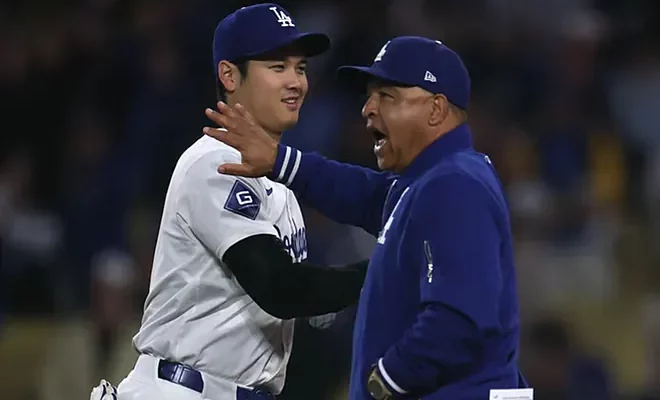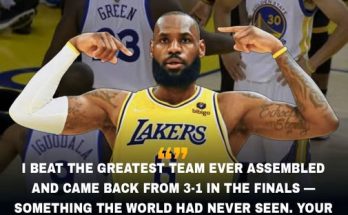Dave Roberts, manager of the Los Angeles Dodgers, has never shied away from speaking openly about his team and the players who define its success, and his recent comments regarding Shohei Ohtani’s evolving role have only reinforced his reputation as one of baseball’s most thoughtful leaders. In a candid conversation with reporters, Roberts shared a detailed assessment of how Ohtani is adapting to a shift that could impact both the pitcher’s personal performance and the broader strategy of the Dodgers. The discussion has generated significant attention across the league, as fans and analysts alike try to interpret what this transition means for one of the most dynamic players in modern baseball.
Ohtani, widely recognized for his rare two-way capabilities, has redefined what it means to be a professional athlete in Major League Baseball. He can dominate on the mound while also wreaking havoc at the plate, a combination rarely seen at the highest level. Yet, with the rigors of a long season and the physical demands associated with playing both roles, adjustments are inevitable. Roberts’ insights shed light on the careful balancing act the Dodgers are undertaking to maximize Ohtani’s impact while protecting his long-term health and effectiveness.
According to Roberts, the Dodgers’ decision to modify Ohtani’s role was far from impulsive. “Every move we make is calculated with Shohei’s best interest in mind, both for his performance this season and his longevity,” Roberts explained. The manager emphasized that the team carefully evaluates Ohtani’s workload, incorporating data from training staff, performance analytics, and Ohtani himself. “We’re not just looking at statistics; we’re looking at how he feels, how his mechanics are holding up, and what’s sustainable over the course of the year. Shohei’s input is critical because no one knows his body better than he does.”
Ohtani’s adaptation to a modified role reflects a broader trend in baseball toward precision management of star players. Pitch counts, recovery schedules, and situational usage have become key tools for managers who aim to maximize output without risking injury. In Ohtani’s case, this has meant carefully balancing his time as a starting pitcher with his responsibilities as a hitter. Roberts acknowledged that such adjustments are delicate, especially when a player of Ohtani’s caliber thrives on rhythm and routine. “It’s not just about giving him breaks; it’s about creating opportunities for him to perform at his peak in the moments that matter most,” Roberts noted.
The manager also highlighted the mental aspect of Ohtani’s transition. “Shohei is incredibly resilient, both physically and mentally,” Roberts said. “He approaches every change with professionalism and curiosity. Adapting to a new role isn’t always easy, but he’s embraced the challenge and remains focused on helping the team win.” Mental adaptability, Roberts stressed, is as crucial as physical readiness when redefining a player’s responsibilities. The Dodgers have seen Ohtani’s willingness to adjust firsthand, and Roberts believes it is a testament to the star’s character and dedication.
Analysts have speculated about the implications of Ohtani’s role shift, particularly regarding his performance at the plate versus on the mound. By slightly reducing his pitching duties or altering his schedule, the Dodgers aim to ensure that Ohtani remains a consistent offensive threat without compromising his pitching effectiveness. Roberts was careful to clarify that this is not a reduction in expectations but a strategic refinement. “Shohei’s talent doesn’t diminish just because we’re tweaking his usage. In fact, the goal is to maximize the value he brings to every game,” he said. “We’re aligning his responsibilities with moments where he can have the most impact, which benefits both him and the team.”
Ohtani’s transition also offers a glimpse into the Dodgers’ broader strategy for managing elite talent in the modern era. With a roster full of high-profile players, balancing workload and performance is a constant challenge. Roberts emphasized that the team’s approach with Ohtani serves as a model for how to handle dual-threat athletes without compromising competitive goals. “It’s about finding that equilibrium,” Roberts explained. “We have to protect our star players while still positioning the team to compete at the highest level. It’s a challenge, but one we’re committed to mastering.”
One of the most striking aspects of Roberts’ commentary was his focus on collaboration. He repeatedly noted that Ohtani’s role adjustment is not a unilateral decision but a team effort involving coaching staff, medical professionals, analysts, and the player himself. “Shohei is at the center of every discussion,” Roberts said. “We brainstorm together, evaluate data together, and make decisions together. That collaborative approach ensures that everyone is on the same page and that the choices we make are informed and balanced.”
The Dodgers’ meticulous planning has not gone unnoticed by the media or fans. While some observers initially expressed concern that modifying Ohtani’s role might limit his legendary two-way contributions, Roberts’ transparency has helped contextualize the decision. By emphasizing the combination of analytics, player feedback, and strategic foresight, Roberts reassured fans that Ohtani’s transition is a proactive measure designed to sustain elite performance rather than a reactive response to fatigue or injury.
Roberts also reflected on the leadership qualities Ohtani has demonstrated throughout this process. “Shohei sets an example every day, not just in how he plays but in how he approaches challenges,” Roberts said. “Seeing him embrace a new role, stay positive, and maintain focus is inspiring for the entire clubhouse. It reinforces a culture where adaptability and professionalism are celebrated.” This sentiment underscores a broader theme in baseball management: the importance of leadership and attitude alongside raw talent. For Roberts, Ohtani embodies both, making the manager confident in the team’s capacity to navigate the complexities of the season.
The Dodgers’ strategy with Ohtani also highlights the evolving nature of player roles in MLB. Traditional approaches often demanded rigid adherence to a defined position or responsibility, but modern teams increasingly recognize the value of flexibility. Players who can contribute in multiple ways are now managed with sophisticated schedules and targeted interventions to ensure peak performance. Roberts’ candid discussion illuminates how one of baseball’s most iconic athletes is being integrated into this modern management paradigm, balancing extraordinary ability with careful oversight.
Fans, naturally, remain curious about the practical outcomes of this adjustment. Will Ohtani’s batting averages improve as a result of reduced pitching duties? Will his strikeout rates remain consistent despite the changes? Roberts acknowledged that while statistics are a key metric, they are not the sole measure of success. “Numbers are important, but context matters,” he explained. “We’re focused on the bigger picture: winning games, maintaining Shohei’s health, and ensuring he can continue to perform at an elite level throughout the season.”
The broader baseball community has taken note of Roberts’ forthrightness. By openly discussing the intricacies of Ohtani’s role change, Roberts has provided rare insight into the managerial decision-making process at the highest level. His transparency serves not only to inform fans but also to educate aspiring managers, coaches, and analysts about the multifaceted considerations involved in managing superstar talent. The approach reflects a modern ethos in professional sports: open dialogue, strategic planning, and player-centric management.
Roberts concluded his remarks with a forward-looking perspective, emphasizing optimism and confidence. “We’re excited about what Shohei can do in this next chapter of his career,” he said. “Change can be challenging, but it also creates opportunity. We believe that by making thoughtful adjustments, Shohei will continue to be one of the most impactful players in baseball, and the Dodgers will be stronger for it.” His comments underscore a commitment not only to immediate performance but also to the sustained success of both player and team.
In sum, Dave Roberts’ reflections on Shohei Ohtani’s role change provide a compelling look at the complexities of managing one of the most unique talents in the sport. The discussion balances practical considerations, strategic foresight, and appreciation for the human element of baseball. By framing Ohtani’s adaptation as a collaborative, well-considered process, Roberts reassures fans that the Dodgers are acting in the best interest of their superstar while positioning the team for long-term success. It is a conversation that resonates far beyond Los Angeles, offering insights into the evolving strategies employed by MLB teams to maximize performance, protect player health, and maintain competitive advantage in an increasingly demanding league.
As Ohtani continues to navigate his new role, the eyes of the baseball world will remain fixed on the Dodgers. Fans, analysts, and fellow players will be watching not only his statistics but also how he adapts to the mental and physical demands of a changing schedule. Through it all, Roberts’ candid, in-depth assessment serves as a reminder of the careful thought, collaboration, and leadership that underpin every decision in professional sports. In Ohtani’s case, this approach seems poised to sustain one of the most extraordinary careers in baseball history while reinforcing the Dodgers’ commitment to strategic excellence.



